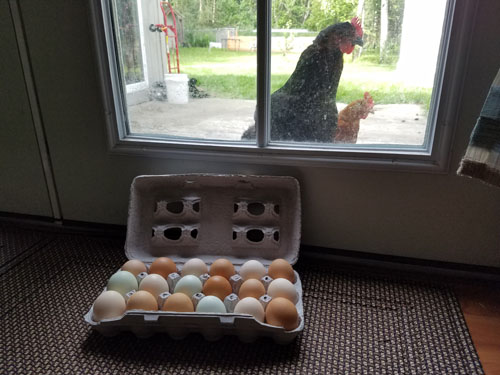While everyone has seen white eggs and light brown eggs, chicken eggs naturally exist in many, many different colors and shades – even light blues, greens & pinks.
Until just a few years ago, I assumed that brown eggs came from organic, well-treated chickens, whereas white eggs came from the cruel egg factories where PETA is always trying to get inside footage.
Turns out, I was super wrong.
Brown eggs, white eggs, green eggs: what does it all mean?
So many misconceptions about eggshell color
My grandma told me a story about her childhood growing up poor, living on a farm. (If you’re reading this, hi GT!)
Her family’s chickens all laid brown eggs, while the well-to-do families that went to her school bought “fancy” white eggs from the store. As a child, she assumed that since her family didn’t have wealth and they only had access to brown eggs, that brown eggs weren’t as good as white eggs.
Even though this might sound silly, when you start talking to people, it turns out there are all kinds of misconceptions behind the meaning of egg color. Everyone has their own interesting story on what they used to think (or still think!) eggshell color means.
So what does the chicken egg color mean?
The color of the shell is entirely dependent on the chicken’s breed. That’s it.
Just like there are tons of dog breeds, there are also tons of chicken breeds. And different breeds lay different colors of eggs.
Some chicken breeds lay light green or pastel blue eggs. I have a few hens called “Easter Eggers” that naturally lay green and blue.
Other chicken breeds lay green olive colored eggs, and some breeds even lay dark espresso colored eggs.
If you do a Google image search for “chicken egg colors,” you might be amazed at the egg rainbow that naturally exists.
Chickens are pretty cool sometimes. :)



